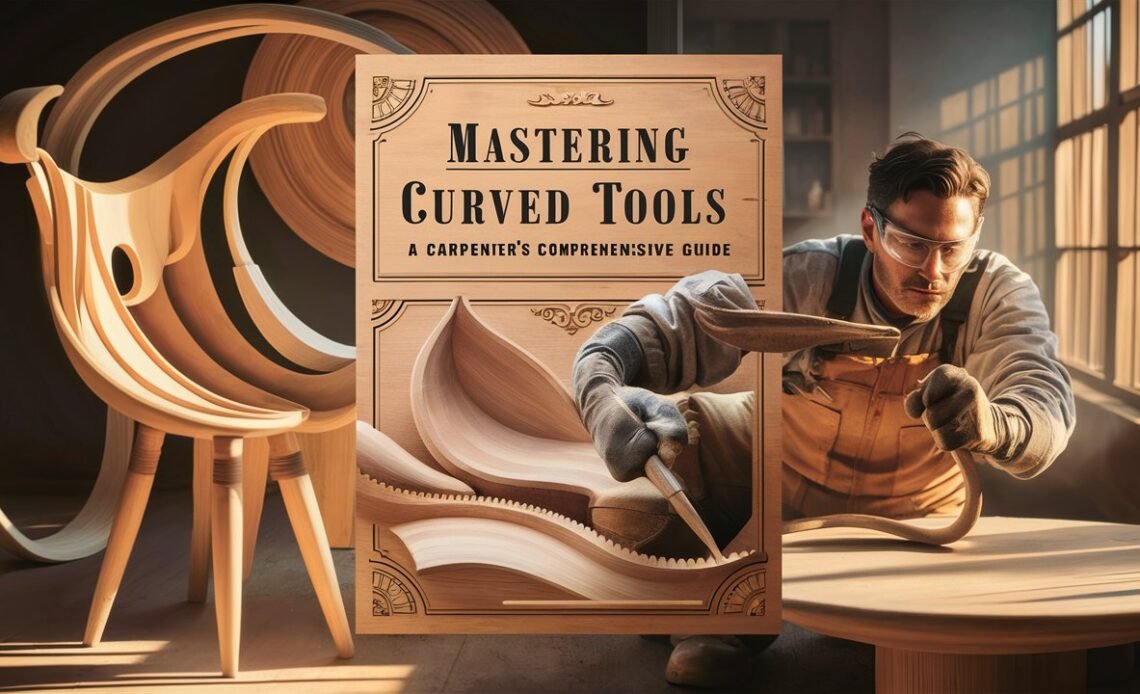Introduction to Curved Tools
Curved tools are essential for any carpenter looking to add finesse and exactitude to their craft. Understanding the different types benefits and applications of curved tools can raise the quality of woodworking projects.
Definition and Types of Curved Tools:
Curved tools encompass wide range of implements from hand saws to chisels and scrapers sketched with curved edges or surfaces to tackle specific woodworking tasks.
Benefits of Using Curved Tools in Carpentry:
Curved tools allow for more intricate and detailed work offering greater control and accuracy in shaping wood.
Applications of Curved Tools in Various Projects:
Curved tools are inconstant and can be used in variety of woodworking projects including furniture making carving and sculpting.
Essential Curved Tools for Every Carpenter
Curved tools are essential for every carpenter, enabling detailed and precise woodworking. Spoke shaves help smooth edges and surfaces, while drawknives quickly remove larger wood sections. Carving gouges of various shapes allow for intricate designs. These tools are key to turning raw wood into beautifully crafted pieces.
Curved Hand Saws.
Curved hand saws are indispensable for cutting precise curves in wood making them must have for any carpenter.
Features and Functions of Curved Hand Saws:
Curved hand saws have a thin Flexible blade with teeth designed for cutting along curves.
Choosing the Right Curved Hand Saw for Different Tasks:
Consider the size and type of teeth as well as the flexibility of the blade to select the best saw for your project.
Proper Maintenance of Curved Hand Saws:
Regularly clean and lubricate the saw blade and store it in dry environment to prevent rust.
Curved Chisels
Curved chisels are specialized tools used for intricate shaping and detailing in woodworking.
Types and Uses of Curved Chisels:
Different types of curved chisels such as gouges and fishtail chisels serve specific purposes in carving and sculpting.
Techniques for Using Curved Chisels Effectively:
Practice controlled cutting and leverage the shape of the chisel for precise shaping.
Safety Precautions When Using Curved Chisels:
Always wear protective gear secure your workpiece and maintain sharp chisels to prevent accidents.
Curved Scrapers
Curved scrapers are ideal for smoothing curved surfaces and removing imperfections in woodworking projects.
Advantages of Using Curved Scrapers in Carpentry:
Curved scrapers provide smooth finish without the risk of tear out enhancing the overall quality of the wood.
How to Sharpen and Maintain Curved Scrapers:
Use burnisher to maintain the edge of the scraper and store it properly to prevent damage.
Creative Applications of Curved Scrapers in Woodworking:
Experiment with different scraper shapes and techniques to achieve unique textures and finishes in your projects.
Techniques for Using Curved Tools Like a Pro
To use curved tools like a pro, keep them sharp for clean cuts. Use steady strokes with spokeshaves for smooth curves and pull drawknives towards you for control. For carving gouges, work with the grain to avoid splintering. Practice these techniques to improve your woodworking skills and create detailed pieces.
Proper Grip and Handling of Curved Tools
Mastering the grip and handling of curved tools is crucial for achieving precision and control in woodworking.
Ergonomic Considerations When Using Curved Tools:
Ensure your tools are comfortable to hold and use reducing strain on your hands and wrists.
Tips for Achieving Precision and Control with Curved Tools:
Practice proper posture and movements to guide the tool effectively along curved surfaces.
Common Mistakes to Avoid When Using Curved Tools:
Watch out for improper tool placement excessive force and incorrect angles that can lead to mistakes in your work.
Curved Tool Sharpening and Maintenance
Keeping your curved tools sharp is essential for achieving clean cuts and smooth finishes in woodworking projects.
Importance of Keeping Curved Tools Sharp:
Sharp tools reduce effort and prevent accidents ensuring high quality end result.
Step by Step Guide for Sharpening Curved Tools Use sharpening stones or systems to maintain the edge of your tools following the correct angle and technique.
Storage and Care Tips for Curved Tools
Store your tools in dry environment away from moisture and other tools that could damage the edges.
Advanced Carpentry Techniques with Curved Tools
Explore advanced techniques to push the boundaries of your woodworking skills with curved tools.
Curved Tool Carving and Sculpting Techniques
Experiment with different chisel shapes and carving methods to create intricate designs and textures.
Inlay and Marquetry Design with Curved Tools
Use curved tools to cut precise shapes and create stunning inlay patterns in your woodworking projects.
Creating Smooth Curved Surfaces with Curved Tools
Master the technique of planing and scraping curved surfaces to achieve flawless finish that enhances the natural beauty of the wood.
Troubleshooting Common Issues with Curved Tools
Using curved tools can be tricky. If your spokeshave chatters, check the blade’s sharpness and angle. For drawknife issues, pull evenly and maintain a steady angle. If your gouge tears the wood, work with the grain and keep it sharp. Regular care and good technique can solve these common problems.
Dealing with Dull Curved Tools
Recognizing and addressing dullness in your curved tools is key to maintaining their effectiveness and efficiency.
Signs of Dullness in Curved Tools
Look for reduced cutting efficiency tearing of wood fibers and rough surfaces as indicators of dull tool.
Quick Fixes for Dull Curved Tools:
Use sharpening stones or files to restore the edge of your tool ensuring they are ready for use.
Preventing Dullness in Curved Tools:
Regularly sharpen your tools and avoid using excessive force or incorrect techniques that can dull the edges.
Handling Rust and Corrosion on Curved Tools
Preventing rust and corrosion on your curved tools prolongs their lifespan and maintains their performance.
Causes of Rust on Curved Tools
Exposure to moisture improper storage, and contact with corrosive materials can lead to rust and corrosion.
Safe Methods for Removing Rust from Curved Tool
Use rust removers abrasive pads or sandpaper to eliminate rust without damaging the tool.
Preventing Rust Build up on Curved Tools
Store your tools in dry environment apply light coat of protective oil and clean them regularly to prevent rust formation.





